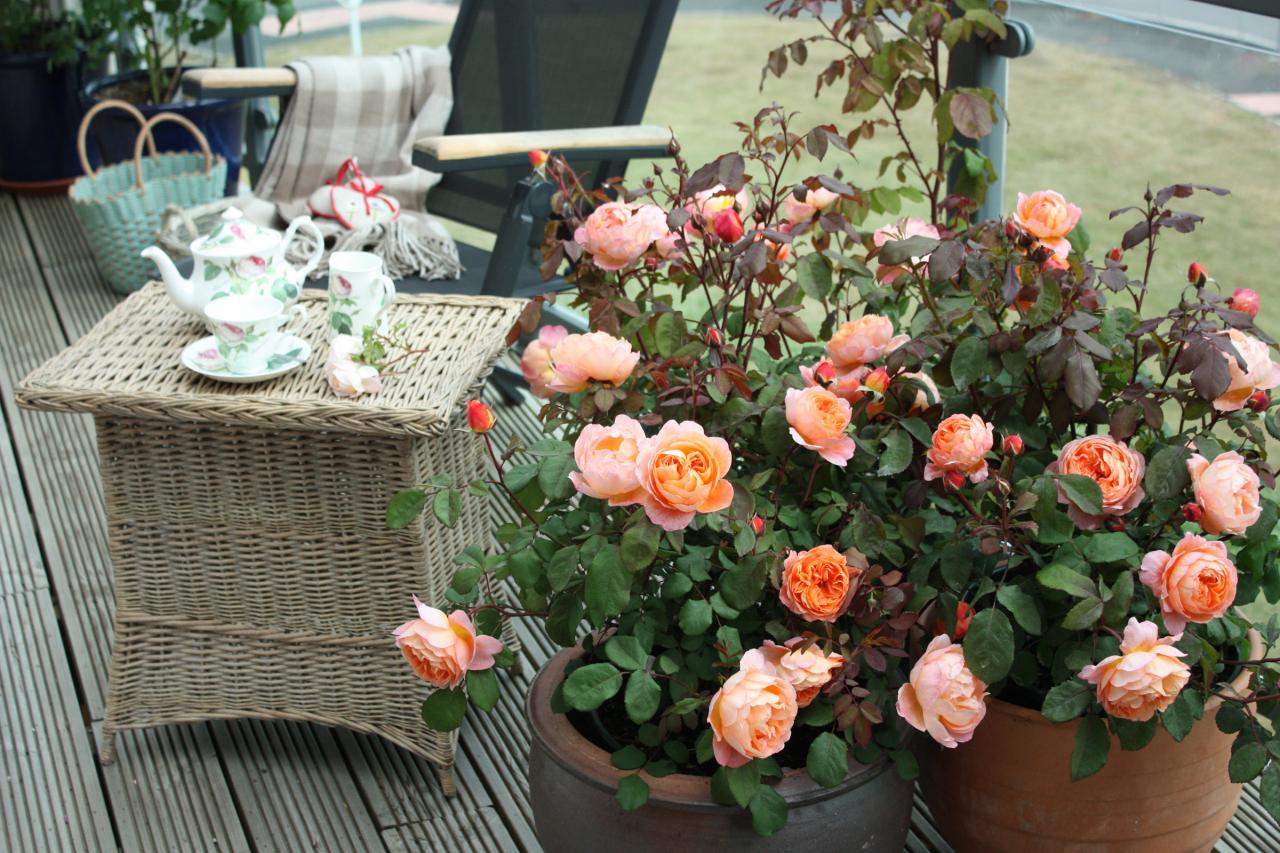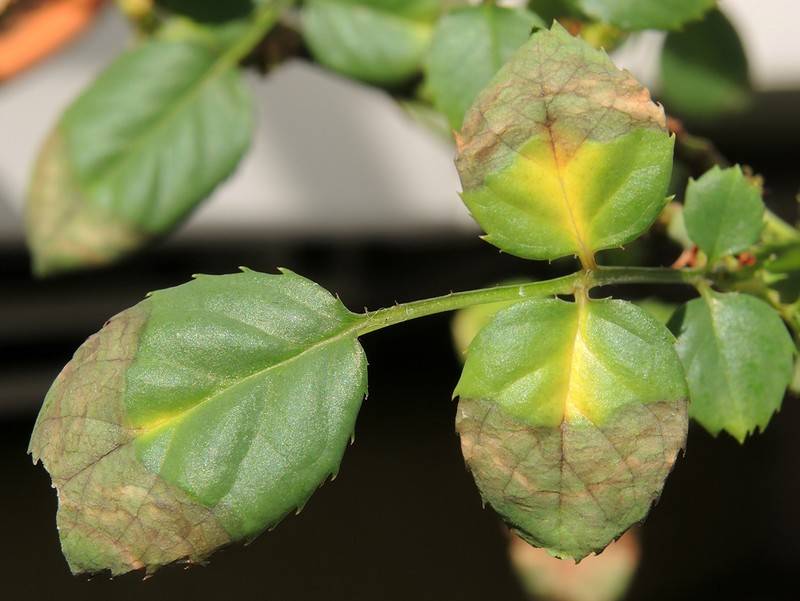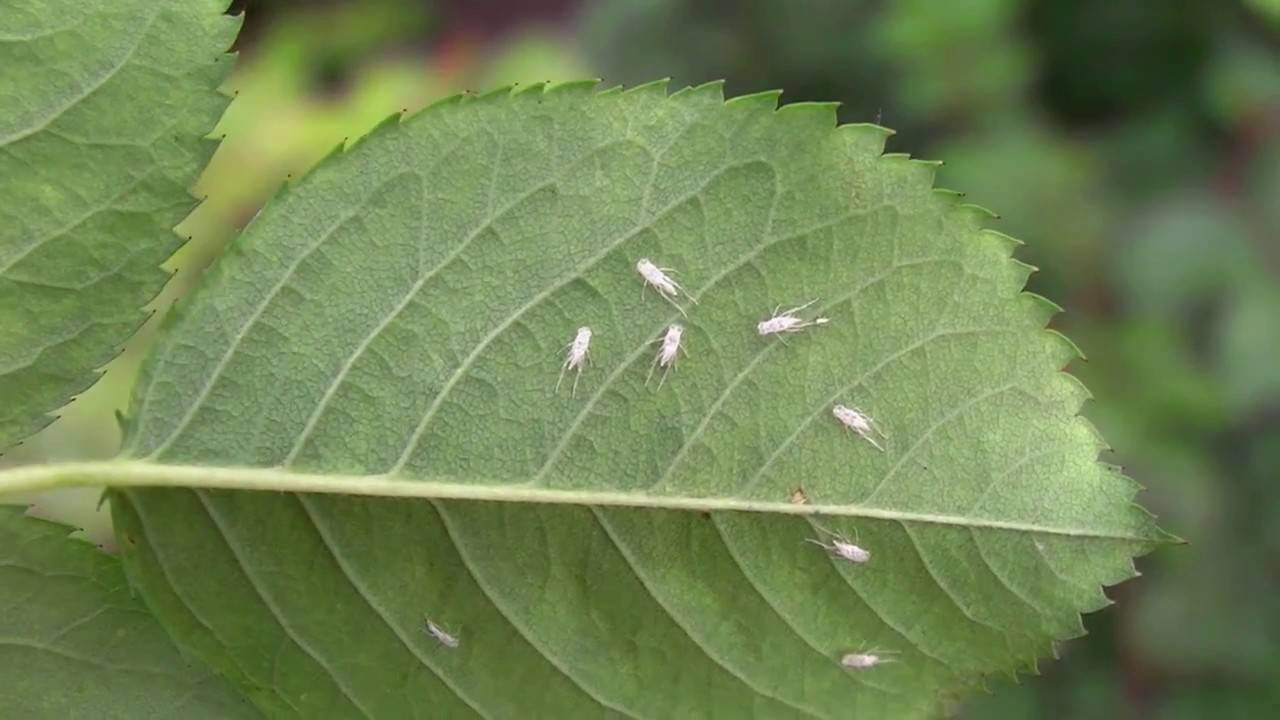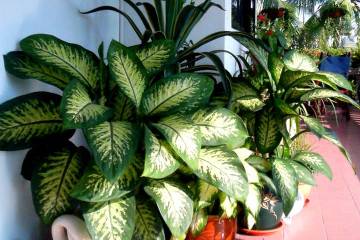Why do the leaves of a room rose turn yellow at home
Content:
One of the most attractive, but also quite finicky flowers is a home rose, whose leaves turn yellow and fall for a variety of reasons. First of all, this is due to the violation of the rules for caring for a bright representative of the flora. In order for the plant to remain attractive, you need to constantly take care of it, water it, fertilize it, and provide fresh air. Otherwise, the rose will stop developing, and you will also have to forget about flowering. A weakened plant becomes susceptible to viral and fungal diseases that can lead to its death.
The rose turns yellow and leaves fall
Indoor rose is a capricious and whimsical plant that will have to pay a lot of attention. At home, usually miniature and hybrid tea varieties are grown. Outdoors, they are not so picky.
If the flower at home is uncomfortable, it will instantly react: its leaves will turn yellow, begin to curl and fall off. The health of a rose depends on many factors, primarily on the position in the house, whether the plant has enough light, whether it is affected by drafts. The quality of the soil plays an important role. If the flower does not receive a sufficient amount of minerals, then this will affect its appearance.
The Chinese rose is considered less capricious, which, with proper care, turns into a real tree in a few years. It survives in both cool and hot rooms, it can exist in the shade. It is also called hibiscus or Chinese rose tree.
A healthy plant blooms regularly, its leaf plates are green, without damage and spots. They are even, not deformed. The appearance of plaque, inclusions of various shades from white to black, indicates an infection of the plant. Diseases, parasites deprive the rose of strength, undermine the immune system. It stops growing, flowering, if it happens, is short-lived and ugly. The shade of the leaves changes, they fade, turn yellow, begin to dry and fall off.
Factors preventing the flower from developing
Indoor rose needs sufficient moisture. In the hot season, if the flower is in the room, it must be sprayed twice a day. If the plant is cool, for example, on a loggia, and rainy days prevail, it is better to refuse additional moisture.
The rose needs nutrients from fertilizers. Lack or overabundance of various elements affects the health of the plant.
A rose can get sick after an incorrect transplant:
- you cannot choose a pot that is too large. The new container, in comparison with the previous one, should be a couple of centimeters larger;
- it is advised to replant the plant in late winter or early spring. At this time, there is a high chance that the rose will take root without problems;
- it is better to use a ceramic container.The earth in such a pot will not heat up in the sun, which means the rose will be comfortable;
- after the procedure, you need to locate the flower in a dark place where the temperature will not be higher than 20 ° C. After two days, you can put the pot in its permanent place.
The plant can face various diseases, usually roses are attacked by fungi. Also, flowers are attacked by pests that destroy nutrients necessary for growth. As a result, the appearance deteriorates, the rose stops developing and may die.
Lack of nutrients in the soil
If alkaline soil is chosen for cultivation, there is a risk that the plant will suffer from a lack of iron. At the same time, the leaves become small, turn yellow, begin to curl around the edges. Manganese deficiency can also be observed in alkaline soil. In this case, yellow streaks will appear on the leaf plates.
Using acidic soil can result in light spots on the plant. Leaves will soon begin to fall off. This is due to a lack of magnesium.
Diseases that cause yellowing of a rose
One of the most common indoor rose diseases is powdery mildew. Leaves, stems and buds are attacked by fungi. First, a light fluffy bloom appears, then it begins to darken, brown spots are formed. Leaves turn yellow, deform, curl. If you do not immediately react and treat the plant, it will die. At best, its growth will stop, the foliage will fall off, the flowers will lose their petals. The rose will lose its attractive appearance.
All affected parts of the plant will have to be removed, otherwise it will not be possible to defeat the disease. It spreads rapidly and also easily spreads to neighboring flowers. Spores are carried on the hands after working with the affected flora, easily move through the air.
Black spots may appear on the leaves of indoor roses. They have jagged edges and are clearly visible. At the same time, the leaf plates themselves turn pale, turn yellow, fade. Over time, the spots grow and merge, and may appear on the shoots. Plant growth slows down, flowering does not occur. The affected leaves fall off, new shoots are formed, which do not have time to gain strength, and immediately face the disease. A systemic fungicide will help to cope with it. The substance penetrates into the plant, contributes to its recovery.
If yellow-red spots are noticeable on the rose, then rust has appeared. The main reasons are the high temperature of the house and the stale air when the room is rarely ventilated.
Improper care
A capricious rose cannot be ignored. You need to monitor the lighting, the temperature in the room, do not violate the watering regime and do not forget to feed the plant, otherwise the flower will lose its attractiveness, it will start to hurt.
Lack of lighting
Indoor rose does not like direct sunlight, feels good in the fresh air. Therefore, in the summer it is better to place it on the balcony or take it out into the garden, but slightly shade it, especially if it is located on the south side. If the plant is constantly exposed to the sun, there is a risk that it will scorch the leaves, and this will lead to burns.
Bad soil
Soil for a rose, first of all, should be loose, allow water and moisture to pass through. It is impossible for the liquid to stagnate at the roots.It is recommended to mix turf, humus in equal proportions and add a little sand. There are ready-made mixtures sold in stores.
m.
Eating disorder
In order for the flower to be healthy, it needs to be fed periodically:
- if the rose lacks nitrogen, then the leaves become pale, yellowish streaks appear on them;
- lack of potassium also affects the appearance of the plant. Yellow spots are formed on the leaf plates.
If a rose receives less fertilization, its growth slows down, its attractiveness disappears. As a result, the flowering becomes not so colorful, the leaves lose their brightness, juiciness, turn yellow, dry and wither.
Room temperature
The health of the rose is more influenced not by the temperature in the room, but by the condition of the soil. Therefore, it is recommended to make sure that the flower pot does not heat up. In the summer, it is better to move it to the balcony, but not place it next to an open window or window. In winter, the plant feels comfortable at room temperature.
Drafts
Drafts pose a danger to any indoor plant, not just a rose. But fresh air must flow to the flower. To create comfortable conditions for a capricious representative of the flora and at the same time not harm him, you can make a cylinder of thick paper and wrap the pot. Otherwise, flower growers are waiting for yellow leaves, which the plant will soon begin to shed.
Pests of indoor flowers
The depletion and wilting of the leaves of a room rose can be associated with the activity of insects:
- spider mite. The insect drinks the sap of the plant, taking away nutrients. Because of this, small pale spots appear on the leaves. They grow and merge. Gradually, the entire leaf plate changes color, and the mite moves further, infecting the remaining parts of the rose. The insect weaves a web that is easily distinguishable with the naked eye;
- thrips. A grayish bloom appears on the leaves, their color becomes pale green, almost yellow. As a result, their shape changes, they deform. High temperature, too dry air contribute to the spread of pests;
- rose leafhopper. Small insects are visible on the underside of the leaves; they are white or yellowish. The leafhopper first drinks the juices of the plant, and then begins to feed on its pulp. Their presence can be suspected after the discovery of discolored dots on the sheet plates. Parasites carry viruses with which they can infect a rose. As a result, the growth of the flower stops, the leaves turn yellow and fall off.
It is important to monitor watering, observe the temperature regime, do not forget about feeding the plants, then the risk of pest damage is significantly reduced.
Treatment and prevention
What to do if the leaves of a home rose turn yellow and fall:
- to get rid of parasites that deprive plants of the forces that take up nutrients, you need to treat the leaves and stems with fungicides. They will also help cure powdery mildew and black spot. It is preferable to use drugs that have a systemic effect. Before the procedure, you need to get rid of the affected parts of the plant in order to speed up the recovery;
- care must be taken that the rose is not under the scorching rays of the sun and is protected from the cold wind. Dry air in the room is detrimental to the plant, so you will have to deal with additional humidification. In the summer, it is recommended to spray the leaves daily, especially if the rose remains indoors and does not move to the balcony.You can place glasses or bowls of water on the windowsill so that it gradually evaporates, humidifying the air;
- excess or shortage of fertilizers is adjusted depending on the symptoms of the disease, soil characteristics. It must be remembered that any feeding must be stopped when the rose is weakened. This applies to infection with various fungal diseases, the destructive actions of parasites. As soon as the flower is restored, you can return to using fertilizers.
Florists, especially beginners, do not always immediately understand why the leaves turn yellow at a room rose. They forget that they need to think not only about timely watering and feeding, it is important to maintain high humidity and ventilate the room every day. Yellowing and leaf fall occurs in a weakened plant, the rules for caring for which are not followed. The rose is capricious, but if you pay enough attention to it and follow all the recommendations, it will delight with abundant flowering, which usually begins in June and lasts until November.





















